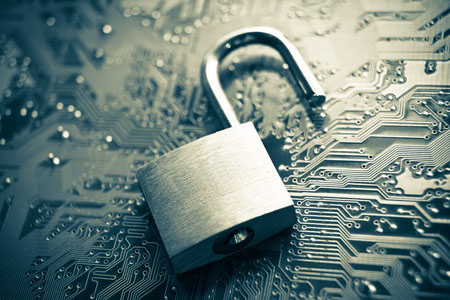Data Protection: Yesterday and Today

The Threats are Many and so are the Protection Methods
In a modern society, the need for cyber security touches a surprisingly large portion of our day-to-day lives. Because of the Internet of Things (IoT), we can scarcely climb out of bed each morning before we use a device that is connected to the internet in some way. Whether it’s our smart phones, Alexa, Siri, tablets, laptops, television or even our automobiles, we are potentially putting personal data out on the internet before we’ve even had our first cup of coffee (or even as we order our coffee for pickup as we head into work). We pay our bills online, we use our phones to deposit checks and we even have wi-fi enabled automobiles.
As individuals, we are responsible for looking out for our own security. As IT Professionals, we are responsible for protecting the data our company produces and collects. In many cases, the data we are protecting in our professional role is personal data, possibly our own. But, the recent Equifax breach is a harsh reminder that, even companies we associate with security are vulnerable. If there is any lesson we can take away from our personal experiences, and the stories behind the headlines, it’s that there is not single solution that will protect us from the threat of our data ending up at the mercy of people with bad intentions. Those of you reading this post are intimately familiar with the steps needed to protect company data. From the network to the desktop, and all points in between, there are many layers to a data protection strategy. One such layer is the Data Backup solutions we use.
Backup, the Original Data Protection
Decades ago, during simpler times, data protection meant being diligent about performing regular backups of data in case a file was accidentally deleted, corrupted or the hard drive crashed. Back in that simpler time, the media to which businesses directed those backups was almost always Tape, lots of tape! This process typically included keeping a set of tapes onsite for immediate restore needs and sending a second set offsite in case of catastrophe and for longer term retention. However, over time, Tape has been increasingly replaced by disk-based backup targets (think HPE StoreOnce, Data Domain, ExaGrid).

Disk-based backup targets started out as a faster way to get data backed up. Tape was still used but typically as a secondary backup target and for longer term retention offsite. The need to go to an offsite backup for file recovery was rare and so tape became that insurance policy that was never going to be needed. As use of disk-based backups became more prevalent, the technology employed to store data evolved. Improvements in compression, deduplication, and replication improved the efficiency of storing larger amounts of data (in the petabytes) and replicating that data to offsite facilities. In fact, with the ability to replicate data from one disk-based target to another over distance, we have started to see Tape being replaced at offsite facilities as well.
Backups As Our Last Defense
While we originally used backup for recovery from accidentally deleted files, random corruption and the occasional disk crash, the world we live in today requires a broader definition for Data Backup. Today, we may need to leverage our backups to recover from a Cyberattack that has either corrupted our data or rendered it unusable as part of a Ransomware attack. Because these kinds of attacks target files on volumes that are persistently mounted to hosts, the vulnerability of disk-based backup targets has come under some scrutiny lately.
Of course, many question whether the risk to disk-based backup targets is very high. After all, backup environments are typically isolated from other, more accessible, areas of the IT infrastructure. Moreover, because of the potential for Cyberattacks on the disk-based backup targets, other processes have been documented and are being implemented to mitigate the risk further. We are starting to see some of these added protections built into the backup software we use and many manufacturers of the disk-based backup devices are providing their own best-practice processes.
Despite the fear of risk for disk-based solutions, we aren’t seeing a trend away from disk-based backup, but we are hearing reports that some companies are once again turning to Tape as their last form of defense against the type of Cyberattacks that would corrupt, delete or encrypt their data. And while disk-based technology has been evolving, tape technology has also continued to evolve. LTO7 technologies provide capacities as high as 15TB (compressed) per tape cartridge. In addition to high capacities and a low TCO, Tape offers encryption at-rest, can be kept offsite and most importantly offline.
So, as we implement safeguards to keep the bad guys out of our IT infrastructure, we need to remember that our plans should include multiple layers. We also need to prepare for the possibility that our best efforts will be thwarted and that our data will be compromised. So, as part of our protection against malicious behavior and risk to our data, we need to carefully plan our Backup processes by taking the layered approach as well.
Categories
Search
Blog Categories
Related Resources
Archives
- April 2024
- March 2024
- January 2024
- October 2023
- September 2023
- August 2023
- July 2023
- June 2023
- May 2023
- April 2023
- March 2023
- February 2023
- January 2023
- October 2022
- July 2022
- June 2022
- May 2022
- April 2022
- March 2022
- February 2022
- January 2022
- December 2021
- November 2021
- October 2021
- September 2021
- August 2021
- July 2021
- June 2021
- May 2021
- April 2021
- March 2021
- February 2021
- January 2021
- December 2020
- November 2020
- October 2020
- September 2020
- August 2020
- July 2020
- June 2020
- May 2020
- April 2020
- March 2020
- February 2020
- January 2020
- December 2019
- November 2019
- October 2019
- September 2019
- August 2019
- July 2019
- June 2019
- May 2019
- April 2019
- March 2019
- February 2019
- January 2019
- December 2018
- November 2018
- October 2018
- September 2018
- August 2018
- July 2018
- June 2018
- May 2018
- April 2018
- March 2018
- February 2018
- January 2018
- December 2017
- November 2017
- October 2017
- September 2017
- August 2017
- July 2017
- June 2017
- May 2017
- April 2017
- March 2017
- February 2017
- January 2017
- December 2016
- November 2016
- October 2016
- September 2016
- August 2016
- July 2016
- June 2016
- May 2016
- March 2016
- February 2016
- January 2016
- December 2015
- October 2015
- September 2015
- August 2015
- July 2015
- June 2015
- May 2015
- April 2015
- March 2015
- February 2015
- January 2014
- February 2013




